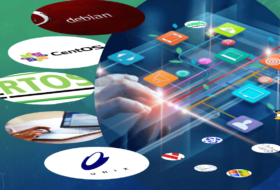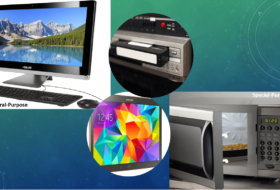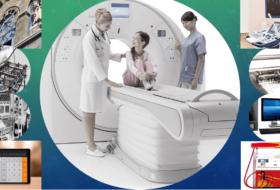In this tutorial, we discussed the concept of the computer system for junior secondary school students. The article will also help anyone new to the computer system to understand its basic concepts.
In the world today, the computer system has proven to be invaluable to mankind. It is used virtually in all areas of human endeavor; in production, communication, medicine, science, etc.
Also, the presence of computer systems is everywhere. Unlike in the early years when only a privileged few own and have access to them. It is therefore important that everyone should have a basic knowledge of the computer system.
This tutorial, therefore, introduces the concept of the computer system for beginners. We shall discuss the following:
- What is a computer system?
- Components of a computer system
- Relationship between the components
Concept of Computer System
What is a Computer System?
A computer system is an electronic device that can perform different tasks based on predefined instructions. Some are designed to perform a particular task and are called special-purpose computers while others can perform more than one task.

Other definitions of the computer system include the following:
- A computer can be defined as a programmable device that can automatically perform logical and arithmetic operations. The operations performed are based on the input given by the user. It returns the desired result after processing the user’s data.
- A computer is an electronic device that accepts, processes, stores, outputs, and communicates data as per user instruction. It processes and gives out the results quickly and accurately.
- A computer system is the combination of hardware and software that takes input, processes them, and gives output.
Characteristics of the computer system
The computer component is divided into two major categories namely hardware and software.
Hardware is the machine itself and its connected devices such as the monitor, keyboard, mouse, scanner, printer, etc. Software is the set of instructions that allow the computer to perform designated tasks.
A computer system has the following characteristics:
- A computer system is an electronic device. This means that it needs electricity to function effectively.
- Tasks are performed by a computer through programmed instructions. This means that a computer cannot work except instruction is passed to it.
- It processes simple and complex data faster and more accurately than human beings
- It can store a large amount of data while working for hours without breaking or inputting errors
- A computer can perform different kinds of work at the same time. This is called multitasking.
- A computer cannot think. Fifth-generation computers require learning algorithms to be able to perform the tasks of man. Thus, a computer does not have emotions, knowledge, experience, or feeling.
- Generally, a computer cannot replace man. It requires man to function, both in programming and operation.
Components of Computer System
Looking at the characteristics of the computer system listed above, we can identify three components of a computer system:
- hardware
- software, and
- peopleware
Hardware component
These include the physical components that make up a computer system. The hardware components include all components that a user can see and touch while using the computer.
The hardware component can be divided into five basic units, namely:
- the input unit
- the storage unit
- the processing unit (Central processing unit – CPU)
- the output unit, and
- the communication unit
The central processing unit is further divided into the Arithmetic logic unit (ALU) and a control unit (CU). These five units enable the computer to perform the following six basic functions:
- Accept data or instruction as input
- Store data and instruction for future use
- Process data based on per-user instructions
- Control all operations within a computer system
- Generate results in the form of output to the user
- Transmit and receive data to/from other computers within a network
The input unit
The input unit enables the computer to collect data from the user. Input devices are connected to the unit to enable users to enter data into the computer system.
The input devices are connected to the computer system through a port system. Older generation computers use serial, ps/2, and firewire ports, but presently the USB and HDMI ports are used.

The devices that are used for input include the following:
- mouse, keyboard,
- scanner, touchscreen monitor,
- camera/ camcorder, joystick, and
- microphone.
The storage unit
The storage unit enables the computer to communicate with the various storage devices connected to it. These devices are used to save data and information for future use. Some of the hardware components that make up the storage devices include:
Primary memory/ storage: they include Random Access Memory (RAM), Read-Only Memory (ROM), cache, and flash memory.
Secondary (internal) storage: two types of devices are used, namely Hard Disk Drive (HDD) and Solid-State Drive (SSD). The SSD is faster but has a lower capacity than HDD.
External storage: This is usually used for tertiary and archival storage or to backup data in case of accidental loss. They include CD/DVD, diskette, flash drive, external hard disk, blue-ray disk, etc.
The central processing unit (CPU)
This is the processing nerve of the computer. It is the center where all arithmetic and logical operations are performed. The CPU receives data and instructions from the primary memory and processes them. It can perform calculations based on the instructions received and the type of data provided. The CPU is divided into the Arithmetic logic unit (ALU) and control unit (CU).

The Arithmetic Logic Unit performs all calculations and comparisons based on the data and instructions provided. Arithmetic operations include addition, subtraction, multiplication, division, power, etc. Logical operations include comparison operators such as greater than, less than, greater than, or equal to, etc.
The Control Unit controls all operations of the computer. It takes care of the step-by-step processing of all operations within the computer. Operations such as input, processing, and output are performed by the control unit.
The output unit
The output unit enables the computer to deliver results to the user. Output devices are connected to the unit to enable users to see or receive results from the computer system.
The output devices are connected to the computer system through a port system. Older generation computers use parallel and serial ports. However, the USB and HDMI ports have replaced them.
The hardware components of the output unit are Monitor, printer, and speaker.
Identifying hardware components
Software component
The software component of a computer is a set of instructions and data stored in digital form within the computer memory. It is divided into two:
- System software, and
- Application software
System software
System software is used to manage and control the hardware component of the computer. It allows for user interaction between the hardware and application software.
There are two major categories of system software: the operating system and device drivers.
Application software
Application software is developed to allow users of a computer system to perform different tasks. They are also called apps for short. Different applications are corresponding to different tasks. For example, Microsoft word is used for word processing, CorelDraw for creating graphics, etc.
Application software can either be generic (i.e. for general use) or bespoke (i.e. custom-made).
Generic application software is developed for the general public. Anyone can purchase, install and use the app for different purposes. As a result, they are usually cheaper and readily available. E.g. Microsoft Word.
The bespoke or custom-made software is designed for a specific purpose. They are usually created for an organization or a particular occasion. This makes them expensive and very rare.
People-ware component
Peopleware refers to the role of people in the development and use of computer software and hardware. The computer is designed to be used by people. The people who use the computer are referred to as the peopleware component of the computer system.
Anyone who designs, develops, or uses a computer system plays an important role in the computing process. They include computer professionals and users such as;
- Hardware and software engineers,
- Programmers and IT specialists
- Individual computer users,
- Network engineers, computer technicians,
- database administrators,
- desktop publishers, etc.
Relationship Between the Components
The relationship between hardware, software, and people-ware
- The hardware, software, and peopleware are indispensable. All of them complement one another and none can function without the other. For example, people created the hardware and software, and the hardware cannot function without the software. Similarly, the software cannot function without the hardware. Also, the hardware and software need people to make them function effectively.
- One hardware can be used to load different software depending on who is using it. This means that people (users) determine the kind of software that can be loaded (installed) on computer hardware.
- The kind of job people does determines the kind of hardware and software that they can use. For example, the kind of computer hardware and software a film editor uses are different from the kind desktop publisher uses.
- Hardware may be purchased once while software used in computer hardware changes over time. Similarly, one or more persons can use computer hardware and software over time.
- Hardware, software, and peopleware can be upgraded over time. This means that obsolete and less functional hardware can be changed or upgraded to improve efficiency. Also, over time, the software is updated to accommodate recent development in information and communication trends. Similarly, computer professionals and users upgrade their knowledge of innovative developments in the hardware and software industry to maximize productivity and usability.
Conclusion
A computer is an electronic device that performs predefined tasks. There are three (3) major components of the computer system, namely hardware, software, and peopleware. Each of these components and interrelated such that one cannot exist without the other.




